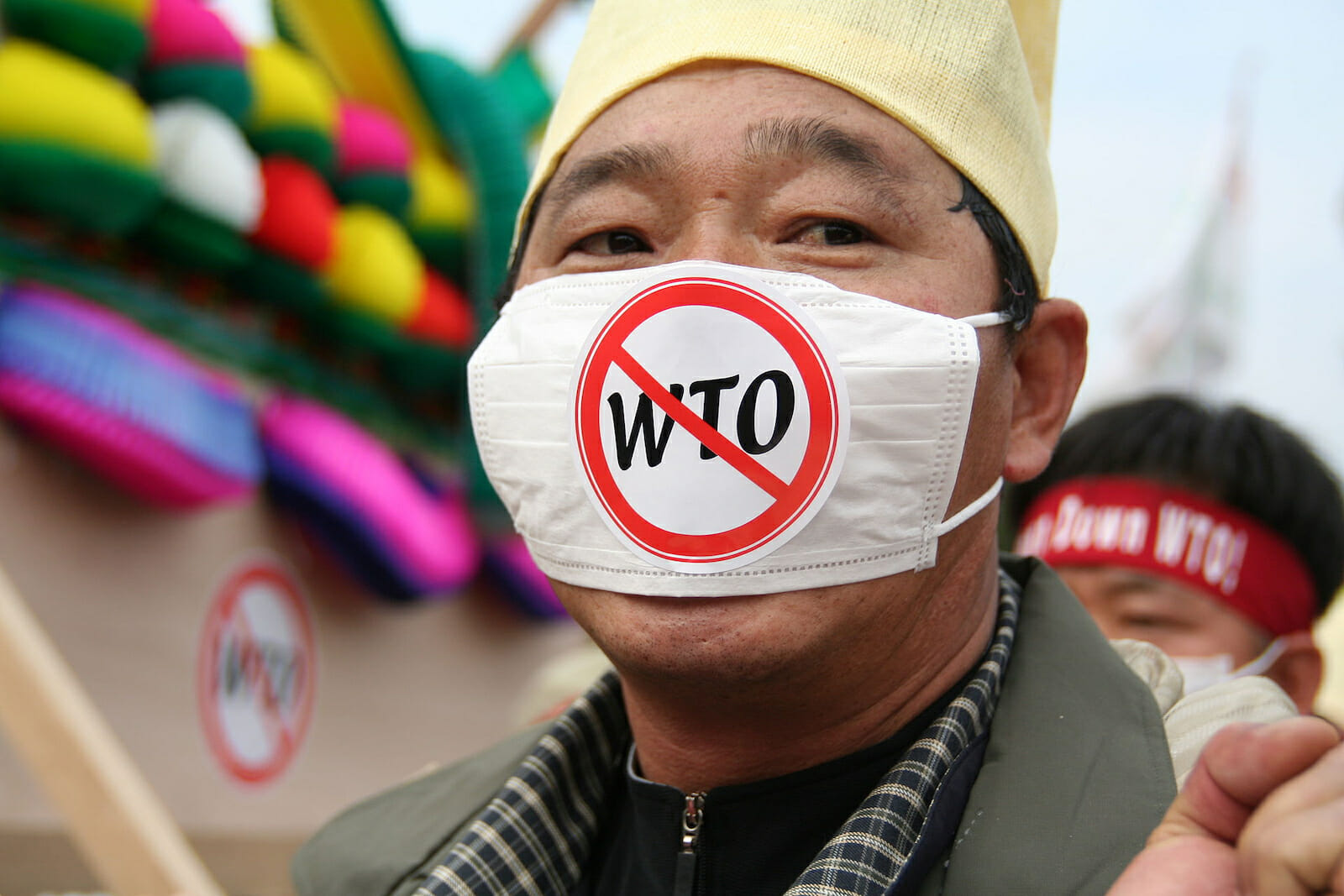
Malaise in the WTO
Born in the twentieth century, the World Trade Organization (WTO) is still largely built on the rules and dispute settlement mechanisms it adopted at its inception in the last century. However, world trade is a rather different beast in the 21st century and will continue to evolve. The WTO must adapt to this new world or it will be quickly marginalized.
The WTO is not keeping pace with the changes taking place in the world. The cross-border flows of goods, services, know-how, investment and people participating in international production networks – supply-chain trade in economic jargon – have transformed the global economy. The WTO is caught between fulfilling its original mission and addressing new and emerging realities. It seems mired in malaise. The 20th-century conflicts over tariffs and agricultural barriers prevents the WTO from concluding the Doha Development Round commenced in November 2001. It seems equally incapable of moving forward in other areas.
Consequently, the most stalwart WTO members are developing trade arrangements independent of existing WTO structures in order to regulate 21st century trade. This failure is in several respects paradoxical. The malaise does not in itself reflect hostility towards the principles of free trade or the liberalization of international commerce.
Quite the contrary, WTO members, including countries like India, Brazil, and China which have long criticized the organization, have conducted a massive liberalization of trade, investment, and services on their own accord since the beginning of the new century. In fact, WTO members have unilaterally, bilaterally or regionally advanced the WTO’s liberalization objectives everywhere except within the WTO itself.
Nor is the apparent disillusionment with the WTO a sign that it has lost popularity. The organization continues to attract new members, including powerful nations like Russia, despite the political cost they must incur to gain a membership card. The WTO may seem less useful now to some members but it would be premature to write it off as irrelevant. Indeed, its dispute settlement procedures are used by an ever wider range of members. In short, when trade issues characteristic of the 20th century have to be addressed, the WTO’s existence is still justified and it remains a viable entity.
The WTO is afflicted by the emergence of a new type of trade: the unbundling of production or, as it is more commonly expressed, the emergence of Global Value Chains (GVCs), which have reshaped the geography of global production. Today, joining a supply chain is the fastest route to industrialization for emerging markets. Unbundling has also restructured the geography of global demand.
In this new trade configuration, there is no place for protectionism. In fact, countries that establish trade barriers are signaling local manufacturers to relocate elsewhere, thus excluding themselves from GVCs. In other words, protectionist measures have become for all practical purposes destructive measures.
New forms of trade need new governing rules which go beyond those of the WTO as they stand. Since the Uruguay Round of multilateral trade negotiations (1995), virtually all the necessary new governance required has been formulated spontaneously by developing countries in regional trade agreements (RTA) or through unilateral trade policy reforms. The real danger for the WTO, therefore, is not so much its complete failure but the erosion of its centrality in the global trading system.
In this context, the WTO’s future will most likely take one of two forms. In the first case, it will merely handle matters associated with 20th-century trade rules but irrelevant for 21st-century trade and GVCs. All “new generation” trade issues will be addressed in other formats, most likely in RTAs.
In this rather optimistic scenario, which seems to be the path currently being followed by the WTO, the Geneva-based organization will maintain its role as one of the pillars of world trade governance. This outcome would be reminiscent of the European Union’s three-pillar structure, in which the first pillar (basically, the disciplines agreed in different treaties up to the 1992 Maastricht Treaty) was supplemented by two new pillars to cover new areas of cooperation. A pessimistic version of this scenario envisions that a lack of progress in adopting new rules may undermine political support for the organization and that violations of WTO disciplines may become commonplace.
Under the second scenario, the emergence of other mechanisms of trade governance will reinvigorate the centrality of the WTO, forcing it to then engage in 21st century trade issues both by developing new multilateral disciplines – or at least general guidelines – on issues such as investment guarantees, and by providing a multilateral dimension to some of the new disciplines which have emerged in RTAs.
This future outlook could take different forms. The WTO’s engagement may involve varying levels of plurilateralism where only a group of members sign up to new disciplines rather than the latter being binding on all WTO members. Several examples, such as the Information Technology Agreement (ATI) and the Government Procurement Agreement (GPA), embody this approach. Another variant is an expansion of the Doha Round agenda which would include some of the new trade issues which are now matters for RTAs.
Naturally, 20th-century type of trade has not disappeared, but if it remains important in certain goods (e.g. primary products) and for some countries (Global Supply Chains are still rare in Latin America and Africa), the most dynamic aspect of trade in the 21st century is the development of GVCs. For this reason, the formulation of new rules and disciplines regulating trade, services, intellectual property, investment, and business mobility is being increasingly undertaken outside the structures of the WTO, which were not designed to regulate these issues.
Developing countries seek to quickly and unilaterally lower their tariffs (especially on intermediate goods) and unilaterally remove barriers and other “behind the border” (non-tariff barriers) obstacles to the expansion of trade, investment and services, and intellectual property rights protection. Moreover, both developed and developing countries are eager to sign bilateral investment agreements and comprehensive RTAs which clearly stipulate the 21st-century disciplines.
These developments have dramatically eroded the WTO’s bearing in the global trade governance system. The implication for states’ trade policies is obvious. WTO members will now have to decide whether the international trade organization continue to regulate global trade with a 20th-century mindset or it works constructively and creatively to delineate a new range of rules and disciplines to address the realities of 21st Century trade.

